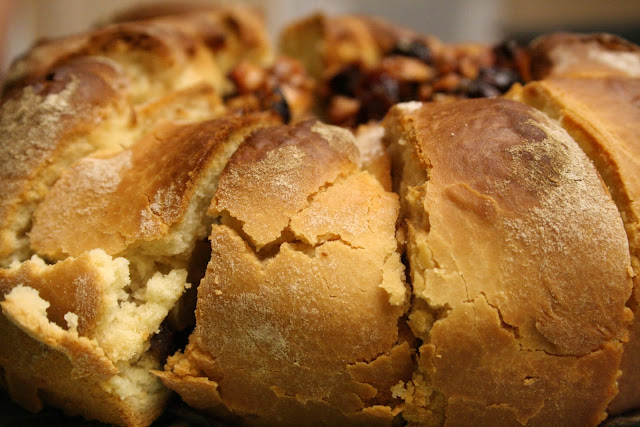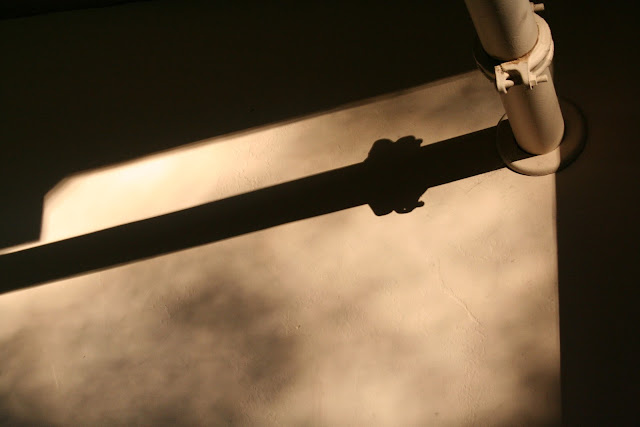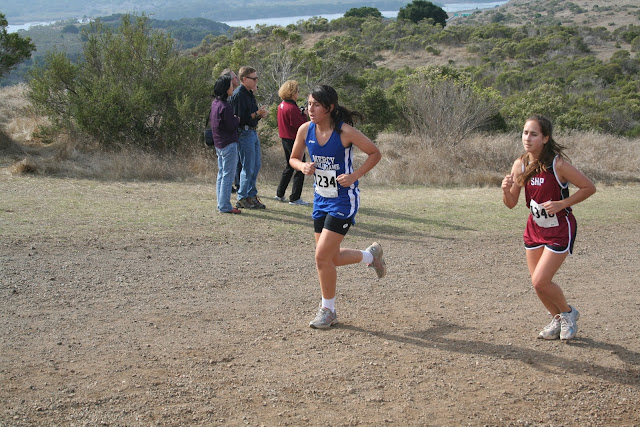Tuesday, December 14, 2010
Wednesday, December 1, 2010
Sunday, November 28, 2010
BARAKA
The movie Baraka used time lapse photography to capture the different ways of life of people and places all over the world. Baraka was shot in 24 countries and over 150 locations. Some locations frequently used were mountains, factories, ancient ruins, religious practices, cities, etc. There was no dialogue, only some music and different voices of the subjects captured. Even though there was no one narrating what was happening in the movie, one could easily depict the stories that were being told. The movie showed many aspects of life and the several different traditions and cultures that make every country unique.
At first, I was a little skeptical about this movie because there was no dialogue and I had never heard about it before. However, after a few minutes, it proved to be very interesting and I enjoyed it. I liked the part shot in the big city following the hundreds of taxi’s down the long street. I also enjoyed the terra cotta warrior’s scene, because I find them fascinating because there purpose and much of their history is still a complete mystery. Overall, I appreciated the time spent watching this movie in class and would recommend it for next year’s class.
Thursday, November 18, 2010
Monday, November 15, 2010
In class facebook assignment...
Hey Kaitlynn,
I really enjoyed looking through your photos of your Disneyland vacation with your family. These photos were taken before our photography class, but some value, rule of thirds, and emphasis are present. It was interesting to see pictures you have taken outside of class and just for fun. I learned that you love Disneyland and love to be with your family. Unlike some families I know you look happy to be with your bro and you two look like good friends. Good job and nice photos! ~Amanda
I really enjoyed looking through your photos of your Disneyland vacation with your family. These photos were taken before our photography class, but some value, rule of thirds, and emphasis are present. It was interesting to see pictures you have taken outside of class and just for fun. I learned that you love Disneyland and love to be with your family. Unlike some families I know you look happy to be with your bro and you two look like good friends. Good job and nice photos! ~Amanda
Wednesday, November 10, 2010
One Shot..
Our class was given the assignment called "one shot". The purpose was to take as many pictures as we wanted and instead of uploading all of them, only uploading one. We had to chose the shot we thought was best before uploading, simply from seeing it on the small lcd screens on our cameras.
My shot is of the purple flowers near the student entrance. The photo seemed alot better on my camera screen and when it stretched out on the computer after I uploaded it I realized that there was a leaf on the right side and that it wasn't as great as I orginally thought it was.
Wednesday, November 3, 2010
Class Notes (Nov. 3)
-photos are the most important thing when someone loses everything
-emotional memories, proof of something your'e proud of
-sonograph/x-ray photos save lives
-brownie camera=in production for 80 years, sold for $1
-before brownie camera people only got their photo taken once or twice in their lifetime
-ordinary people could now take pictures
-great slices of social history preserved
-photography made national geographic very successful
-photography needed human interventions to really be art
-WWI-war photos raise awareness at home
-no magazine could show pictures of dead soldiers/death
-anti-war activists showed truth with pictures of modern warfare
-1900's photos relplaced drawings in newspapers
-photos in newspapers catch the audiences eye and attention
-emotional memories, proof of something your'e proud of
-sonograph/x-ray photos save lives
-brownie camera=in production for 80 years, sold for $1
-before brownie camera people only got their photo taken once or twice in their lifetime
-ordinary people could now take pictures
-great slices of social history preserved
-photography made national geographic very successful
-photography needed human interventions to really be art
-WWI-war photos raise awareness at home
-no magazine could show pictures of dead soldiers/death
-anti-war activists showed truth with pictures of modern warfare
-1900's photos relplaced drawings in newspapers
-photos in newspapers catch the audiences eye and attention
Monday, October 25, 2010
Blog Notes (114-119)
Formal Portraits:
-time and effort is evident in final product
-prepare in advance
-background on a wall, 10-20 feet of clear space in front of the background
-stool 4-6 feet in front of the background for subject
-light 45 degrees to the right of subject
-adjust angle and position of the reflector for best effect
-camera directly in front of subject
Camera Settings:
-good that background may be out of focus
-f-stops keeps subjects in focus and keeps emphasis where it belongs
Indoor Lighting:
-45 degree angle on one side or the other of your subject
-use a reflector until light is just right
Outdoor Lighting:
-direct sunlight is not best, too harsh and subject awkward
-open shade is good
-cloudy days are great for photography
Candid Protraits:
-capture a person going about everyday life and activites (sports, watching TV, talking with friends, etc.)
-natural shots are more effective than posed
-surroundings are important in candids
-take more pictures when trying to capture a good candid shot than normal posed pictures
-time and effort is evident in final product
-prepare in advance
-background on a wall, 10-20 feet of clear space in front of the background
-stool 4-6 feet in front of the background for subject
-light 45 degrees to the right of subject
-adjust angle and position of the reflector for best effect
-camera directly in front of subject
Camera Settings:
-good that background may be out of focus
-f-stops keeps subjects in focus and keeps emphasis where it belongs
Indoor Lighting:
-45 degree angle on one side or the other of your subject
-use a reflector until light is just right
Outdoor Lighting:
-direct sunlight is not best, too harsh and subject awkward
-open shade is good
-cloudy days are great for photography
Candid Protraits:
-capture a person going about everyday life and activites (sports, watching TV, talking with friends, etc.)
-natural shots are more effective than posed
-surroundings are important in candids
-take more pictures when trying to capture a good candid shot than normal posed pictures
Sunday, October 17, 2010
Wednesday, October 13, 2010
Wednesday, October 6, 2010
Journal Notes 108-113
Working with People
-a portrait is a collaborative project between the subject and the photographer
-make sure your subject feels at ease and at home
Camera Formats
-you want a balance between having enough detail and being able to respond quickly to your subject
-35mm cameras are best for candid and environmental portraits
-portraits location and subject's belongings can say a lot about him or her
Film Speed
Slow Films (50 to 100 ISO)
-finer grain catures more detail and creates smoother loocking images, which makes them good for formal portraits
-slow films usually mean slower shutter speed
Fast Films (400 to 3200 ISO)
-more sensitve to light, better for candid and environmental protraits
-doesnt capture fine details as well
Black and White or Color?
-black and white can focus the viewers attention on the subject
-most people prefer color
-colors set mood or tone
Lenses For Portraits
-24mm=worst, too close to subject, not flattering whatsoever
-50mm= little less distortion than the 24mm, still not flattering
-100mm= most flattering, near normal perspective, no distortion
Camera Accessories
-tripod=three-legged metal stand on which you can mount your camera
-tripods steady the camera, and help sharpen your shots and concentrate on the best positioning
-cable release=flexible wire, one end of which attaches to the camera's shutter release, lets you change shutter without actually touching the camera
-reflector=anything that will reflect light
Formal Portrait
-simpliest, and only emphasizes the subject and nothing else
-neutral backgrounds
Julia Margaret Cameron
-England, 1815-1879
-started taking pictures at age 48
-got camera as gift from eldest daughter and she soon became obcessed with photography
-self taught and most pictures were dreamlike, romantic paintings of the artists of her time
-today her photos live on, inspiring and influencing well known photographers such as, Alfred Stieglitz and Cindy Sherman
-a portrait is a collaborative project between the subject and the photographer
-make sure your subject feels at ease and at home
Camera Formats
-you want a balance between having enough detail and being able to respond quickly to your subject
-35mm cameras are best for candid and environmental portraits
-portraits location and subject's belongings can say a lot about him or her
Film Speed
Slow Films (50 to 100 ISO)
-finer grain catures more detail and creates smoother loocking images, which makes them good for formal portraits
-slow films usually mean slower shutter speed
Fast Films (400 to 3200 ISO)
-more sensitve to light, better for candid and environmental protraits
-doesnt capture fine details as well
Black and White or Color?
-black and white can focus the viewers attention on the subject
-most people prefer color
-colors set mood or tone
Lenses For Portraits
-24mm=worst, too close to subject, not flattering whatsoever
-50mm= little less distortion than the 24mm, still not flattering
-100mm= most flattering, near normal perspective, no distortion
Camera Accessories
-tripod=three-legged metal stand on which you can mount your camera
-tripods steady the camera, and help sharpen your shots and concentrate on the best positioning
-cable release=flexible wire, one end of which attaches to the camera's shutter release, lets you change shutter without actually touching the camera
-reflector=anything that will reflect light
Formal Portrait
-simpliest, and only emphasizes the subject and nothing else
-neutral backgrounds
Julia Margaret Cameron
-England, 1815-1879
-started taking pictures at age 48
-got camera as gift from eldest daughter and she soon became obcessed with photography
-self taught and most pictures were dreamlike, romantic paintings of the artists of her time
-today her photos live on, inspiring and influencing well known photographers such as, Alfred Stieglitz and Cindy Sherman
Tuesday, October 5, 2010
Journal Notes: Portraits (103-107)
Portraits:
-people are the most popular subject for photography
-we record the milestones and events of our lives, i.e. birthdays and holidays, to tell the story of our lives
-portraits=demonstrate the similarities and differences between the subject and the viewer, we can see ourselves in the face of another person
-formal portraits=emphasize only the person who is the subject of the photo.
-candid's= capture a persons going about normal day to day activities
-environmental=place the person in a setting that says something about him or her
-self-portraits=feature you
Early Portrait Photography:
-photography replaced painting as the primary medium of portraits
-nearly everyone could afford one
-Gaspard-Felix Tournachon(1820-1910), was the first great portrait photographer, starting in France in 1853
-Tournachon used "Nadar", with soft lighting and plain, dark backgrounds to reveal his subjects personality
-August Sander (Germany, 1876-1964) created some of the first environmental photos
-showed subjects lives and work
-created a photo documentary on the lives of German people from all walks of life
Creating Portrait Photos:
-value is important (range of dark and light)
-keep in mind location of light
-subtle changes in value can provide a sense of depth in an image
-values can also bring emotional content to a shot, bright scenes convery happiness, while dark convey sad, or depressing
-balance and rule of thirds are also important techniques
Shape and Form:
-when a line meets itself, a shape is created
-in any composition our eyes are drawn to shapes and our minds quickly try to make sense of them
-by presenting your subject as the dominant shape, you can emphasize him or her, creating an imediate sense of importance for the subject
-with groups of people try triangles, feels balances and solid
-people are the most popular subject for photography
-we record the milestones and events of our lives, i.e. birthdays and holidays, to tell the story of our lives
-portraits=demonstrate the similarities and differences between the subject and the viewer, we can see ourselves in the face of another person
-formal portraits=emphasize only the person who is the subject of the photo.
-candid's= capture a persons going about normal day to day activities
-environmental=place the person in a setting that says something about him or her
-self-portraits=feature you
Early Portrait Photography:
-photography replaced painting as the primary medium of portraits
-nearly everyone could afford one
-Gaspard-Felix Tournachon(1820-1910), was the first great portrait photographer, starting in France in 1853
-Tournachon used "Nadar", with soft lighting and plain, dark backgrounds to reveal his subjects personality
-August Sander (Germany, 1876-1964) created some of the first environmental photos
-showed subjects lives and work
-created a photo documentary on the lives of German people from all walks of life
Creating Portrait Photos:
-value is important (range of dark and light)
-keep in mind location of light
-subtle changes in value can provide a sense of depth in an image
-values can also bring emotional content to a shot, bright scenes convery happiness, while dark convey sad, or depressing
-balance and rule of thirds are also important techniques
Shape and Form:
-when a line meets itself, a shape is created
-in any composition our eyes are drawn to shapes and our minds quickly try to make sense of them
-by presenting your subject as the dominant shape, you can emphasize him or her, creating an imediate sense of importance for the subject
-with groups of people try triangles, feels balances and solid
Monday, October 4, 2010
Wednesday, September 29, 2010
Sports Photography
-location is key, the closer the better
-timing and reacting
-no distractions
-vertical pictures are perferred
-better pictures have more conflict in the scene
-rule of thirds is an important principle to follow
-know the players/coaches habits
-baseball is hard to shoot, football is easier
-freezing action shots need fast shutter speeds
-don't rush your shots, take your time to get the best photo possible
example:
-timing and reacting
-no distractions
-vertical pictures are perferred
-better pictures have more conflict in the scene
-rule of thirds is an important principle to follow
-know the players/coaches habits
-baseball is hard to shoot, football is easier
-freezing action shots need fast shutter speeds
-don't rush your shots, take your time to get the best photo possible
example:
 |
| Posey's getting the out. |
Tuesday, September 28, 2010
Food Photography Assignment..
While looking for a food photographer, I came across the name Bill Brady several times, so I decided to learn more about him and his photos..
Portfolio: http://www.studio212photo.com/photographs.html
Bill Brady's career as a food photographer started as a child when his love for food started to grow. He found that his favorite memories from his childhood were when his family gathered for meals at his grandmothers house. Today he combines his passions of food and photography into a career as a food photographer. He states, "What makes me great at what I do is my love of food, my appreciation for how a meal is prepared and the absolute joy it brings me to experience it."
Portfolio: http://www.studio212photo.com/photographs.html
Bill Brady's career as a food photographer started as a child when his love for food started to grow. He found that his favorite memories from his childhood were when his family gathered for meals at his grandmothers house. Today he combines his passions of food and photography into a career as a food photographer. He states, "What makes me great at what I do is my love of food, my appreciation for how a meal is prepared and the absolute joy it brings me to experience it."
Sunday, September 26, 2010
MERCY DAY!
Wednesday, September 22, 2010
Subscribe to:
Comments (Atom)


















































